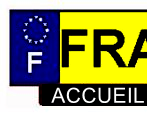 French military
series of The First World War, by Thierry Baudin
French military
series of The First World War, by Thierry Baudin
 French military
series of The First World War, by Thierry Baudin
French military
series of The First World War, by Thierry Baudin
Article published in Europlate 166 Newsletter, August 2013
Most registration systems show a differentiation between various kinds
of vehicles. The new French SIV system has eliminated many of the
differences but far from all. In earlier French systems there
were certain invariables, e.g. that the last number on normal plates
indicated the department in which it was registered, and that the first
number on diplomatic plates indicated the country its owner
represented. However, no information regarding the manufacturer of the
vehicle or regarding which organization it belonged to was shown.
This was not the case for the military vehicle registrations during WW
1. At different times, marks indicated (i) the user, (ii) the
organization which had delivered the vehicle, and (iii) the branch of
the military using the vehicle. As far as we know, not a single
military plate from this period exists in any collection. This is
mainly due to the fact that the registrations were painted directly on
the body of the vehicles. Also, any French plate from before 1920, or
even 1925, is very scarce in collections. To describe the plates
of that period is, however, easier, as we have photos from the
extensive coverage of the war at hand. Thousands of photos of military
vehicles are available.
So, let us look at the details of these plates::
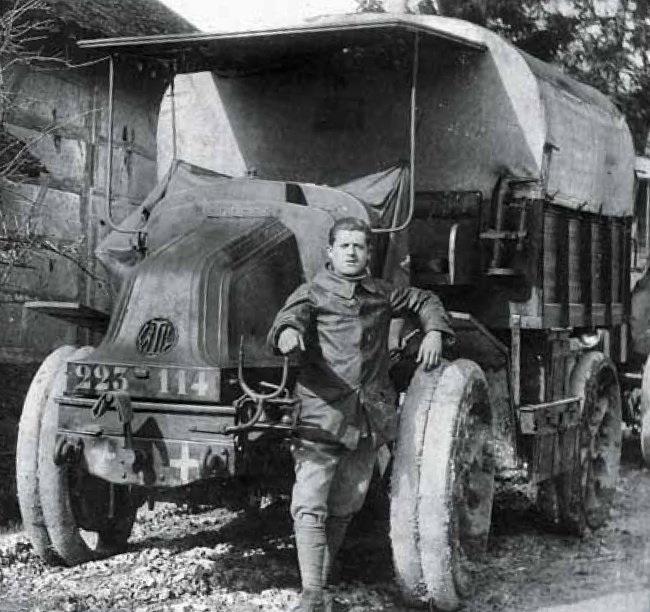  Coll. F. Vauvillier, GBM 98, © H&C 2011 |
The series we see on the photos is fully numeric. It started at 1 and had reached around 235000 at the end of the war. Higher numbers were assigned later – up into the 250000 series – until the end of 1922. After that, the second French military registration system, which had the national flag ahead of the registration, was introduced. The registration 223114 shown by this Latil artillery tractor is typical of the highest numbers reached by the all-numeral series at the end of the conflict, ca. 235000. |
The
situation before 1914
Before the “Great War” there was no military registration series.
The
few vehicles (less than 500) assigned to the army had normal civilian
plates. This regards vehicles able to drive at speeds exceeding 30
km/h. Others, usually lorries, were not registered following the decree
of 1901. So, at the beginning of the war the vehicles used by the
army still carried their normal civilian registrations. The
unregistered vehicles often got some sort of military registrations of
which very little is known. Then, from September 1914, and through the
last quarter of that year, under the realization that the war would
last longer than expected, the army had to acquire a large number of
vehicles. These included the first French lorries in larger quantities
as well as British and American lorries and the first armoured cars. It
was now urgently necessary to be able to identify and register those
vehicles.
|
During
the last quarter of 1914 the General Headquarters of General Joffre set
up the logistics at three levels: |
Nonexistent
before 1914, ambulances represented a large part of the specialised
vehicles put in operation during the war; the serial 49233 of this
Renault shows that it was delivered some time in 1915 by the MT
organisation centre in Versailles. 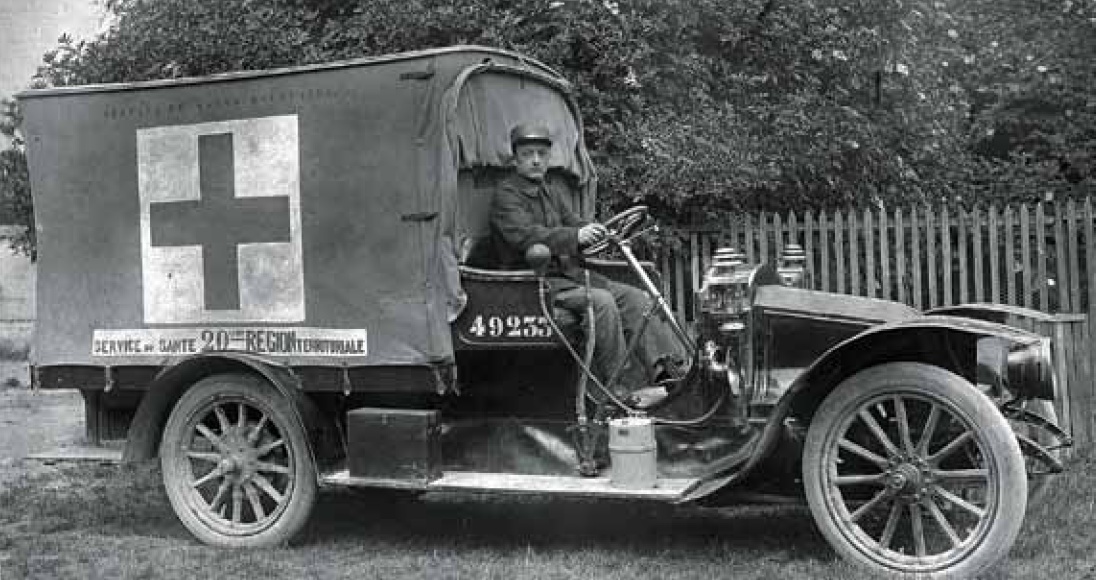  Coll. F. Vauvillier, GBM 98, © H&C 2011 |
Empowerment of the Mechanical Transport Organization centres (MTs)
At the
same time – the first quarter of 1915- the MT's became operational
enough in their role as suppliers of complete sets of vehicles to also
be responsible for the registration of the vehicles. Different blocks
were assigned to Versailles and Dijon. The importance of the latter was
somewhat lower.
100
years later, how can we understand the numbers we know ?
We can draw some conclusions based on the following
remarks:
Other war series
Even
though the all-numeric series described above is the most widely known
and photographed one, there were also some other series used during the
war. The all-numeric series was at the time only used in the so-called
war zone. This is the area of the actual fighting and the area close to
it. The responsibility for this zone was in the hands of the
commander-in-chief. The rest of the country was the so-called interior
zone, governed by the civil authority.
Different registration series were used in the interior zone
until the end of January 1916:
| The requisition
series With requisition we understand forced purchases at fixed prices of e.g. civilian vehicles by the army at mobilization or during the war. This was first introduced in 1877 for animal-drawn vehicles and extended to motorized vehicles in 1909. Following a selection process the requisitioned vehicles were gathered and, if necessary, modified prior to their delivery to the units in the war zone or in the interior zone. The organization was handled by the military regions; in 1914 France had 20 such regions. The requisitioned vehicles got a registration consisting of a letter denoting the military region followed by a serial number. At the outbreak of the war, however, this was not always the case due to lack of time. In the interior zone the procedure was usually enforced, although in various degrees depending on the military region. A few vehicles even kept their civilian registrations. The re-registrations in the interior zone were completed by mid-1915. Only six months later they were, however, ordered to abandon the special requisition series and start using the all-numeric series also for these vehicles. Each military region received a specific block for this purpose. Prefix Military region C Rouen D Le Mans E Orléans G Besançon H Bourges L Tours M Rennes N Nantes P Limoges R Clermont-Ferrand S Grenoble T Marseille U Montpellier V Toulouse X Bordeaux Z Paris (Military Government)
|
This
rare photo card dated late 1914 pictures the Berliet closed car
allocated to a general, a member of the French War Council; the number
R 413 is partially hidden. 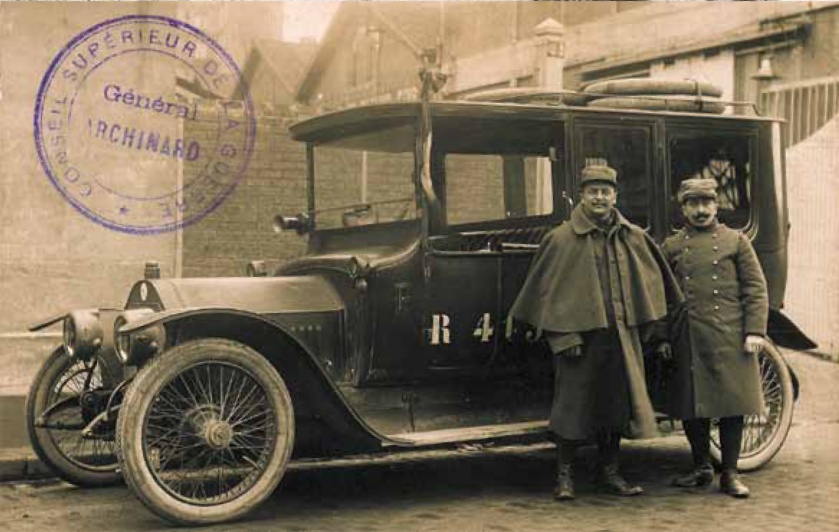  Coll. F. Vauvillier, extrait de GBM 98, © H&C 2011 |
| Again
a rare shot, an example of the RM series assigned to the Ministerial reserve at the beginning of the war; although hardly legible, the low number RM 201 (just in front of the windscreen) indicates that this pricey Peugeot open tourer was incorporated into the reserve as soon as August 1914.  Coll. F. Vauvillier, extrait de GBM 98, © H&C 2011 |
The ministerial
reserve series |
|
The DMAP series |
With
the mark DMAP 1022, this British Star is typical of the
trucks used for training drivers, depicted some time in 1915; the
serials that they show always come from the blocks 1,000 or 2,000. 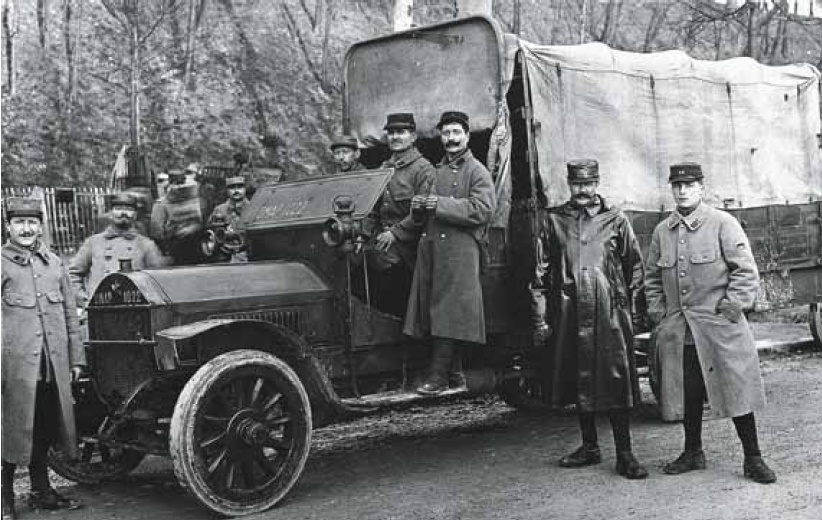 Coll. F. Vauvillier, extrait de GBM 98, © H&C 2011 |
Snapped
in the courtyard of the Invalides hospital in Paris, this Lancia
ambulance with the mark Z 21438 perfectly illustrates the
reintroduction of letter Z for identifying the vehicles of GMP, from
the moment the Paris area was no longer in the war zone, i.e. starting
January 1915. 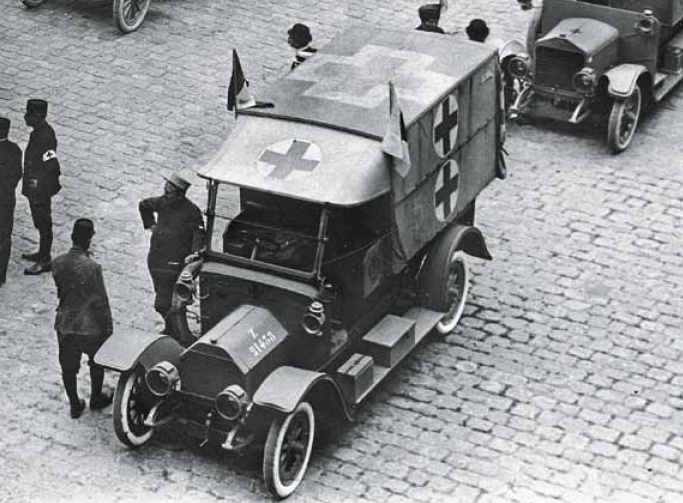  Coll. F. Vauvillier, extrait de GBM 98, © H&C 2011MP |
The special case of the GMP |
Vehicles belonging to the Automobile Training Centres (Centres
d'Instruction Automobile / CIA), located in the interior zone, used
registrations with the prefix CIA.
This series was probably used until early 1916. The CIAs trained
personnel from the colonies.
Vehicles of the General Headquarters had an MT of its own. Early
in the war it used special prefixes for various categories of service,
personnel etc. A special block in the lower part of the all-numeric
series was assigned to this MT.